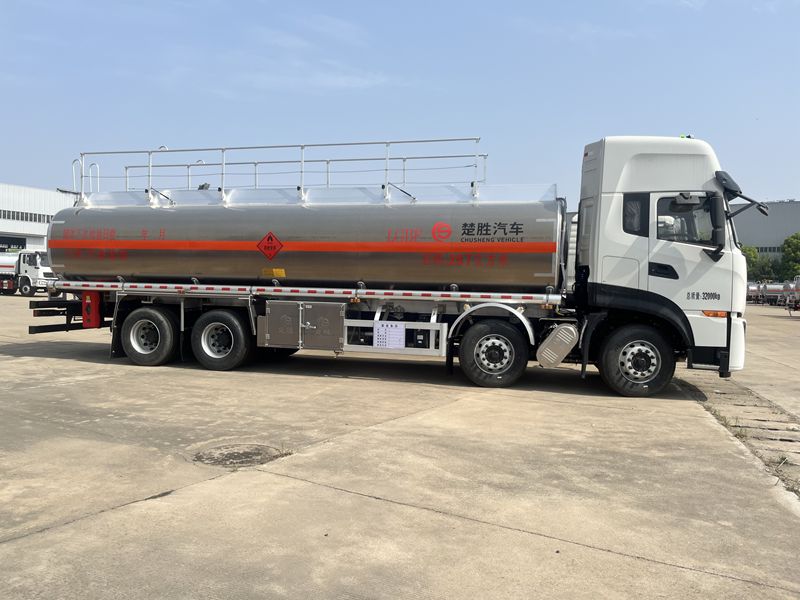While long-haul oil transport still relies on diesel,oil storage tanker truck urban last-mile deliveries—transporting fuel from depots to city gas stations—are increasingly using electric oil tanker trucks. In China, oil storage tanker truck cities like Shenzhen and Shanghai have deployed over 300 electric tanker trucks for urban routes. oil storage tanker truck These trucks have a range of 200 kilometers on a single charge, which is sufficient for daily urban deliveries,oil storage tanker truck and they produce zero tailpipe emissions—critical for improving air quality in dense cities oil storage tanker truck.

Oil tank truck Shenzhen’s oil storage tanker truck electric tanker fleet has reduced urban transport emissions by 28% and cut fuel costs by 40% compared to diesel tank wagon models Oil tank truck. “ oil storage tanker truck Urban areas have the most to gain tank wagon from electric tankers—they reduce pollution and noise,” Oil tank truck says a fleet manager in Shenzhen. “We’re planning to replace all our urban tanker trucks with electric models by 2026.”
Oil tank truck In Europe,tank wagon cities like London and Paris are offering incentives for electric tanker adoption,Oil tank truck such as reduced congestion charges and access to bus lanes tank wagon.Oil tank truck This has encouraged logistics firms to invest in electric fleets, Oil tank truck with London aiming to have 100% electric last-mile fuel deliveries by 2030.
Challenges: Infrastructure and Cost Barriers
Despite these innovations, oil tanker trucks face significant challenges. The lack of charging infrastructure for electric tankers remains a major hurdle—while cities are adding charging stations, rural areas (where many depots are located) still have limited access. In Australia, tank wagon for example, only 15% of rural fuel depots have electric vehicle charging points, slowing the adoption of electric tankers for regional deliveries.
Cost is another barrier: electric and hydrogen tankers are 2–3 times more expensive than traditional diesel models. Smaller operators,Oil tank truck especially in developing countries,Oil tank truck cannot afford these upgrades without financial support. “We want to switch to electric,Oil tank truck but the upfront cost is too high,” says a small fleet owner in Kenya. “We need loans or grants to make the transition.”
Additionally, Oil tank truck training for operators of new tanker technologies is scarce. In Brazil, only 30% of tanker drivers have received training on electric vehicle maintenance, leading to longer downtime when issues arise Oil tank truck.
While long-haul oil transport still relies on diesel, urban last-mile deliveries—transporting fuel from depots to city gas stations—are increasingly using electric oil tanker trucks. In China, cities like Shenzhen and Shanghai have deployed over 300 electric tanker trucks for urban routes. These trucks have a range of 200 kilometers on a single charge, which is sufficient for daily urban deliveries, and they produce zero tailpipe emissions—critical for improving air quality in dense cities.Shenzhen’s electric tanker fleet has reduced urban transport emissions by 28% and cut fuel costs by 40% compared to diesel models. “Urban areas have the most to gain from electric tankers—they reduce pollution and noise,” says a fleet manager in Shenzhen. “We’re planning to replace all our urban tanker trucks tank wagon with electric models by 2026.”
In Europe, cities like London and Paris are offering incentives for electric tanker adoption, tank wagon such as reduced congestion charges and access to bus lanes. This has encouraged logistics firms to invest in electric fleets, with London aiming to tank wagon have 100% electric last-mile fuel deliveries by 2030.
Challenges: Infrastructure and Cost Barriers
Despite these innovations, oil tanker trucks face significant challenges. The lack of charging infrastructure for electric tankers remains a tank wagon major hurdle—while cities are adding charging stations, rural areas (where many depots are located) still have limited access.tank wagon In Australia, for example, only 15% of rural fuel depots have electric vehicle charging points, slowing the adoption of electric tankers for regional deliveries.

